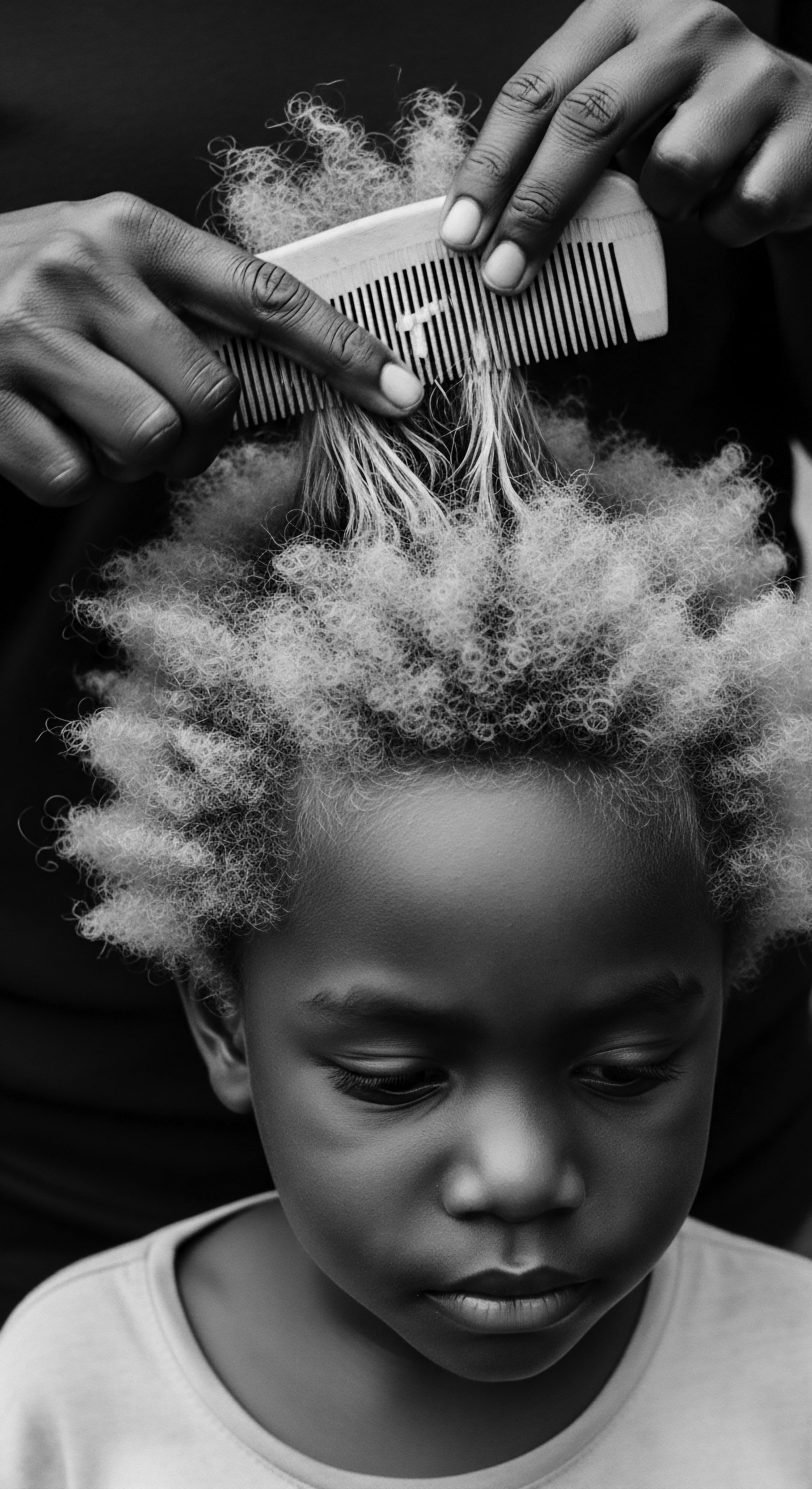
Roots
The very strands that crown our heads, particularly those with a coil or wave, carry within them echoes of generations past, of sun-drenched landscapes, and of hands that practiced an ancient, knowing care. For those of us with textured hair, a whisper of connection to our forebears resides in each curl, each twist, each bend. It is a connection that goes beyond mere appearance; it extends to the very architecture of our hair, its inherent response to moisture, and the ways in which it has been honored through time. Our textured hair, in its myriad forms, is a living chronicle.
Its physical qualities, so often dismissed by a narrow world, are in fact a testament to environmental adaptations and enduring cultural practices. Understanding how a hair strand accepts or guards against hydration, a quality often called ‘porosity,’ is not merely a technical detail; it is a step into appreciating the profound wisdom that shaped ancestral grooming and protected our hair’s very life force.
Consider the cuticle, the outermost layer of each hair shaft. Think of it as a protective shield, made of tiny, overlapping scales. How tightly these scales lie against the shaft, or how open they become, determines the hair’s porosity. Hair with scales closely bound, like a tightly shut pinecone, exhibits low porosity.
It resists water at first, but once moisture finds its way in, it holds it steadfastly. Conversely, hair with more open or raised scales displays high porosity. This hair welcomes water quickly, yet releases it with equal haste, like a sieve. Then there is the balanced state, what we term medium porosity, where the scales permit a measured intake and a gentle release of moisture. This fundamental quality, though given a scientific label in modern times, was intuitively grasped by communities whose hair reacted to the rhythms of their environment long ago.
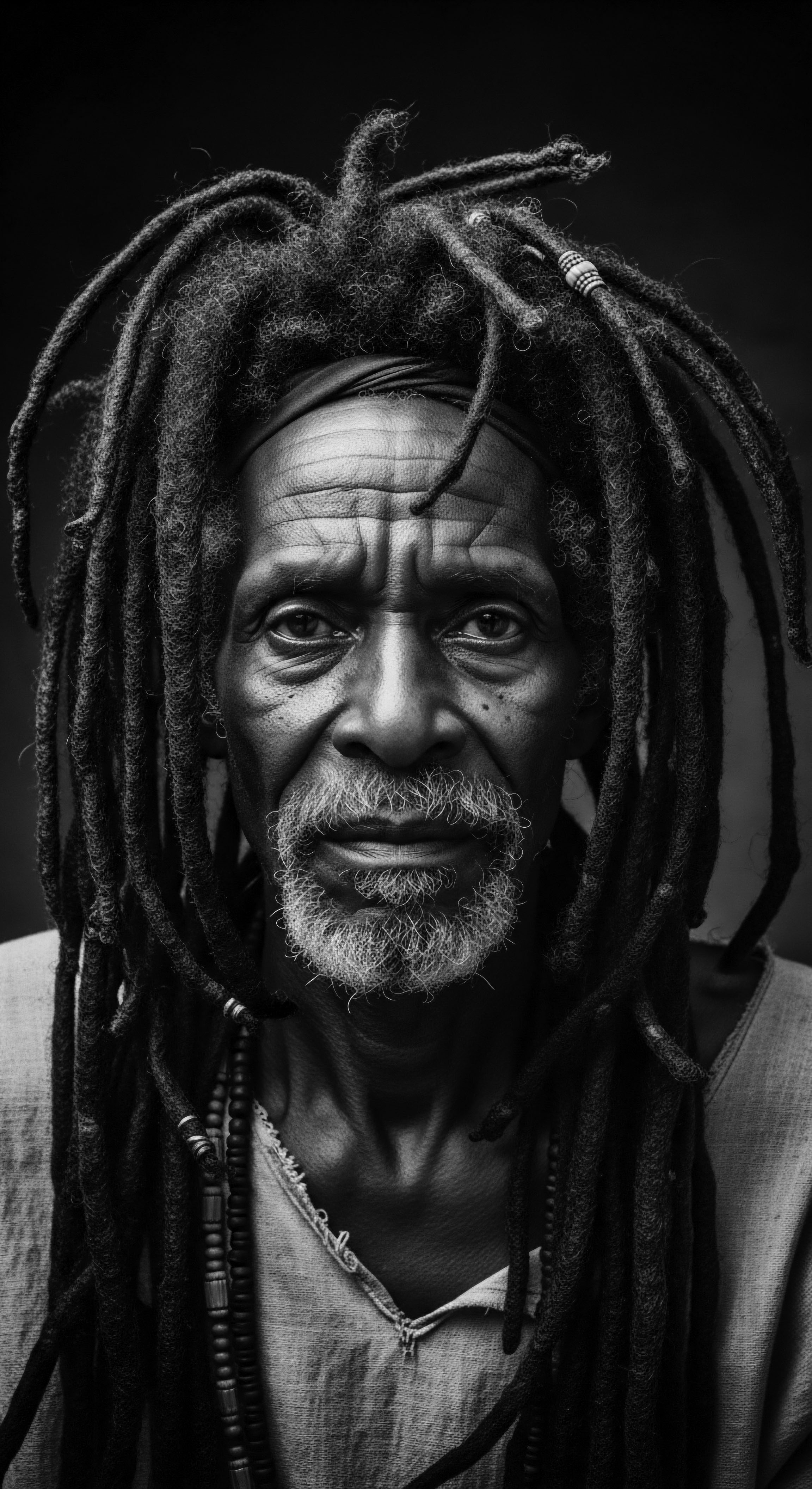
The Anatomy of Coils
Textured hair, distinct from straighter types, possesses an elliptical or flattened cross-section, contributing to its unique spiral form. This particular shape, along with the varying angles at which it grows from the scalp, influences how the cuticle layers settle. The natural curvature of coily hair means that the sebaceous oils produced by the scalp, which serve as nature’s conditioning agents, find it more difficult to travel down the entire length of the strand. This inherent characteristic makes textured hair more prone to dryness, requiring specific attentiveness to hydration strategies.
Ancestral communities, without microscopes or scientific terminology, observed these behaviors. They recognized that certain hair types craved oils and butters, while others might appear weighed down by them. This empirical understanding formed the bedrock of care rituals passed from elder to youth, a deeply held knowledge reflecting the intimate familiarity with one’s own being and surroundings.
The physical attributes of textured hair, particularly its porosity, held unspoken sway over ancestral hair care practices and the choice of natural remedies.
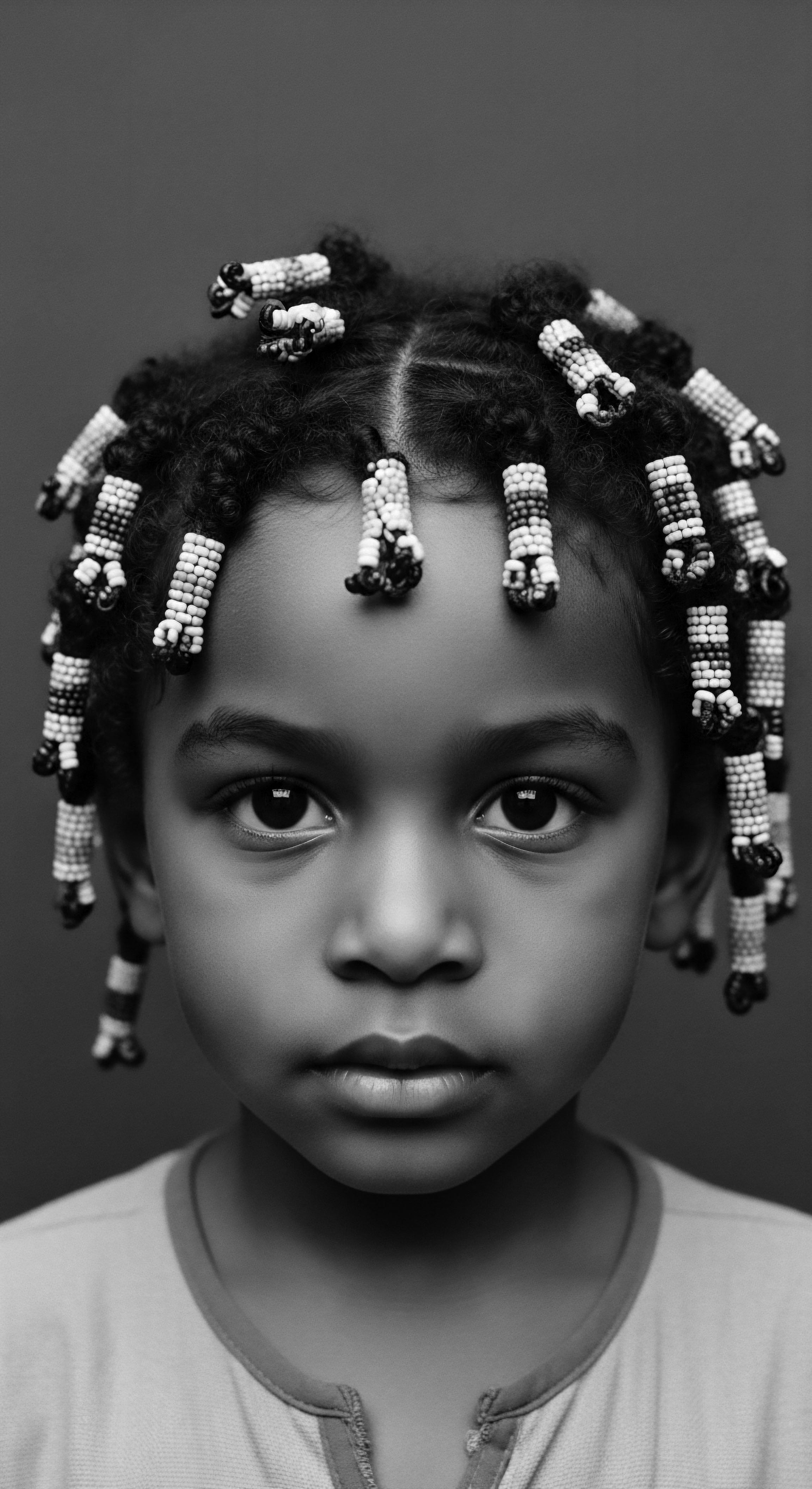
Echoes from the Source
The knowledge of how to tend to textured hair is as old as the strands themselves, passed down through generations long before the advent of modern laboratories or formalized product lines. In Central Africa, for example, the women of the Bassara/Baggara Arab tribe in Chad hold the wisdom of Chébé Powder. This fine powder, derived from the seeds of the Chébé plant, was not just a styling aid; it was a guardian of length. Mixed with water to form a paste, or blended with deeply hydrating substances like Shea Butter, it was applied to hair already hydrated.
This practice was believed to aid in retaining length by somehow filling spaces in the hair shaft and sealing the cuticle (Obscure Histories, 2024). This historical example shows an intuitive understanding of sealing the hair’s outer layer to prevent moisture loss, a practice directly corresponding to modern notions of managing high porosity.
This traditional Chadian application of Chébé powder, particularly its combination with water and subsequent braiding to lock in hydration, provides a compelling illustration of how communities long ago discerned and responded to what we now categorize as hair porosity. They recognized that some hair types, by their very nature, would eagerly receive water but then quickly surrender it to the air. The Chébé paste, working in concert with the physical act of braiding, acted as a physical barrier, slowing that evaporation. This wisdom, not written in textbooks but etched into daily ritual, served as a foundational principle for hair preservation in climates where moisture could swiftly vanish.
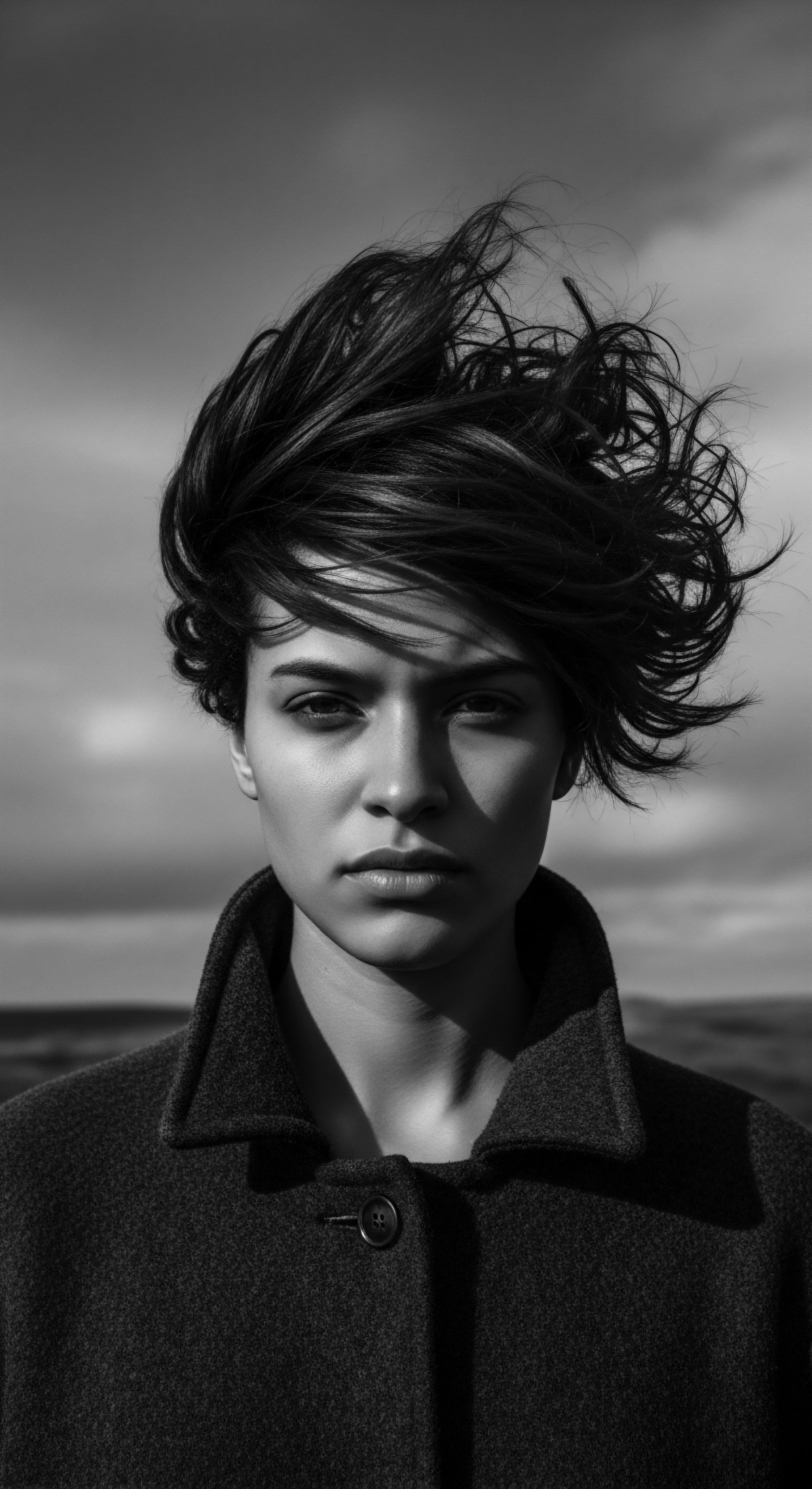
Ancestral Classifications of Hair Character
While formal scientific classification systems for textured hair are a relatively recent development, often criticized for their limitations and colonial biases, ancestral communities possessed their own nuanced ways of describing hair. These descriptions were not based on alphabetical codes but on observable qualities and behavior:
- Hair That Drinks and Thirsts Quickly ❉ This descriptor points to hair with high porosity, which readily absorbs water but also dries rapidly, calling for heavier emollients and frequent re-hydration.
- Hair That Sheds Water ❉ This describes low porosity hair, where water beads on the surface before slowly permeating, suggesting a need for lighter, penetrating oils and warm applications to assist absorption.
- Hair That Accepts Readily ❉ This refers to hair exhibiting medium porosity, which responds well to a range of products and requires balanced care to maintain its equilibrium.
These traditional descriptors, often tied to practical care strategies, underscore a deep, experiential knowledge of hair’s characteristics, including its porosity, centuries before scientific models emerged. The evolution of Afro-Textured Hair is also understood to be an adaptation to protect early human ancestors from intense ultraviolet radiation, where its spiraled structure may have helped provide cool air to the scalp, indicating that its unique physical properties, including those that influence moisture retention, served a purpose far beyond mere aesthetics.
The basic lexicon of textured hair care in ancestral times was not one of chemical compounds, but of elemental gifts ❉ water, plant oils, clays, and butters. Shea Butter, derived from the nuts of the karité tree, served as a core ingredient across many West African regions, treasured for its ability to soften, protect, and seal the hair shaft, acting as a balm against harsh sun and drying winds. Similarly, Rhassoul Clay, from Morocco, was used for cleansing the hair and scalp without stripping its beneficial qualities, a cleansing method that would be especially gentle on hair susceptible to moisture loss. These substances were chosen not by accident, but through generations of observation, trial, and refinement, reflecting an intimate dialect between humans and the flora of their lands.
| Hair Porosity Type Low Porosity |
| Ancestral Observation (Implied) Resists initial wetting, yet holds moisture for long stretches. |
| Modern Scientific Description Tightly bound cuticles, repelling water, requiring heat for moisture entry. |
| Hair Porosity Type Medium Porosity |
| Ancestral Observation (Implied) Responds well to various treatments, holds moisture with ease. |
| Modern Scientific Description Slightly raised cuticles, allowing balanced absorption and retention. |
| Hair Porosity Type High Porosity |
| Ancestral Observation (Implied) Absorbs liquids quickly, but dries rapidly afterward. |
| Modern Scientific Description Raised or damaged cuticles, allowing rapid water entry and exit. |
| Hair Porosity Type Ancestral practices intuitively addressed porosity through the selection and application of natural ingredients, a wisdom now validated by scientific inquiry. |
The rhythm of hair growth, its cycles of activity and rest, was also likely perceived, if not formalized. Seasonal shifts, dietary changes influenced by harvest, and general wellbeing would have subtly influenced hair vitality. Hair, in ancestral communities, often mirrored the health of the individual and the abundance of the environment.
The focus was not on accelerating growth artificially, but on nurturing a healthy scalp and preserving the length that naturally occurred, a practice evident in the length-retaining benefits attributed to treatments like Chébé. The profound significance of hair care routines in these cultures underscores that hair was never merely an aesthetic detail; it was a chronicle of vitality, a symbol of community, and a testament to enduring ancestral care.
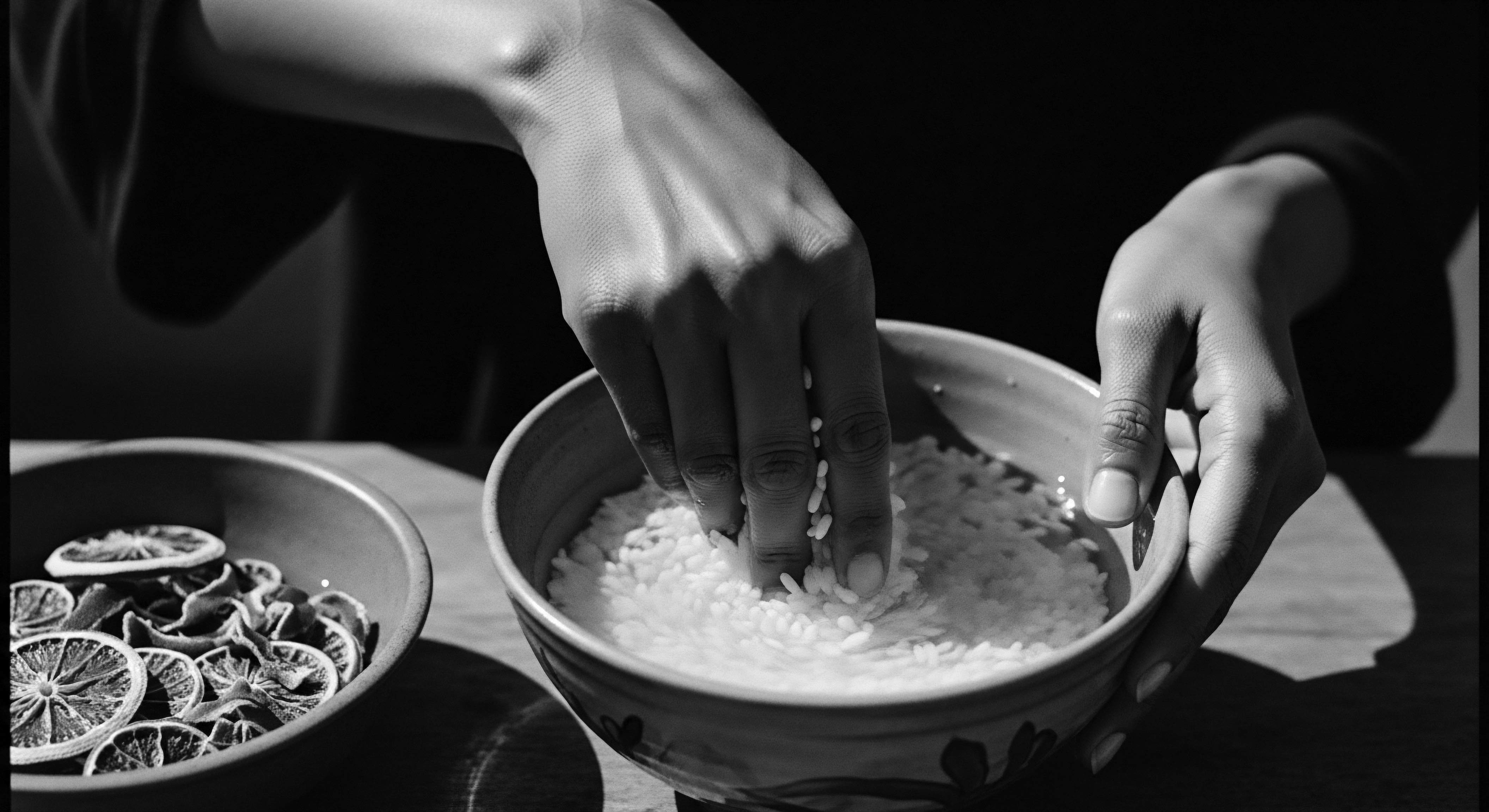
Ritual
The daily and ceremonial tending of textured hair, often viewed as ‘ritual,’ embodies a profound interplay between ancestral practices and the intrinsic properties of the hair strand itself, including how it absorbs and holds hydration. This ritual, spanning generations, reflects a sophisticated understanding of styling not just as an art form, but as a protective measure, a communal activity, and a means of cultural preservation. The methods, tools, and transformations applied to textured hair have consistently accounted for its unique needs, adapting to its varied porosities.
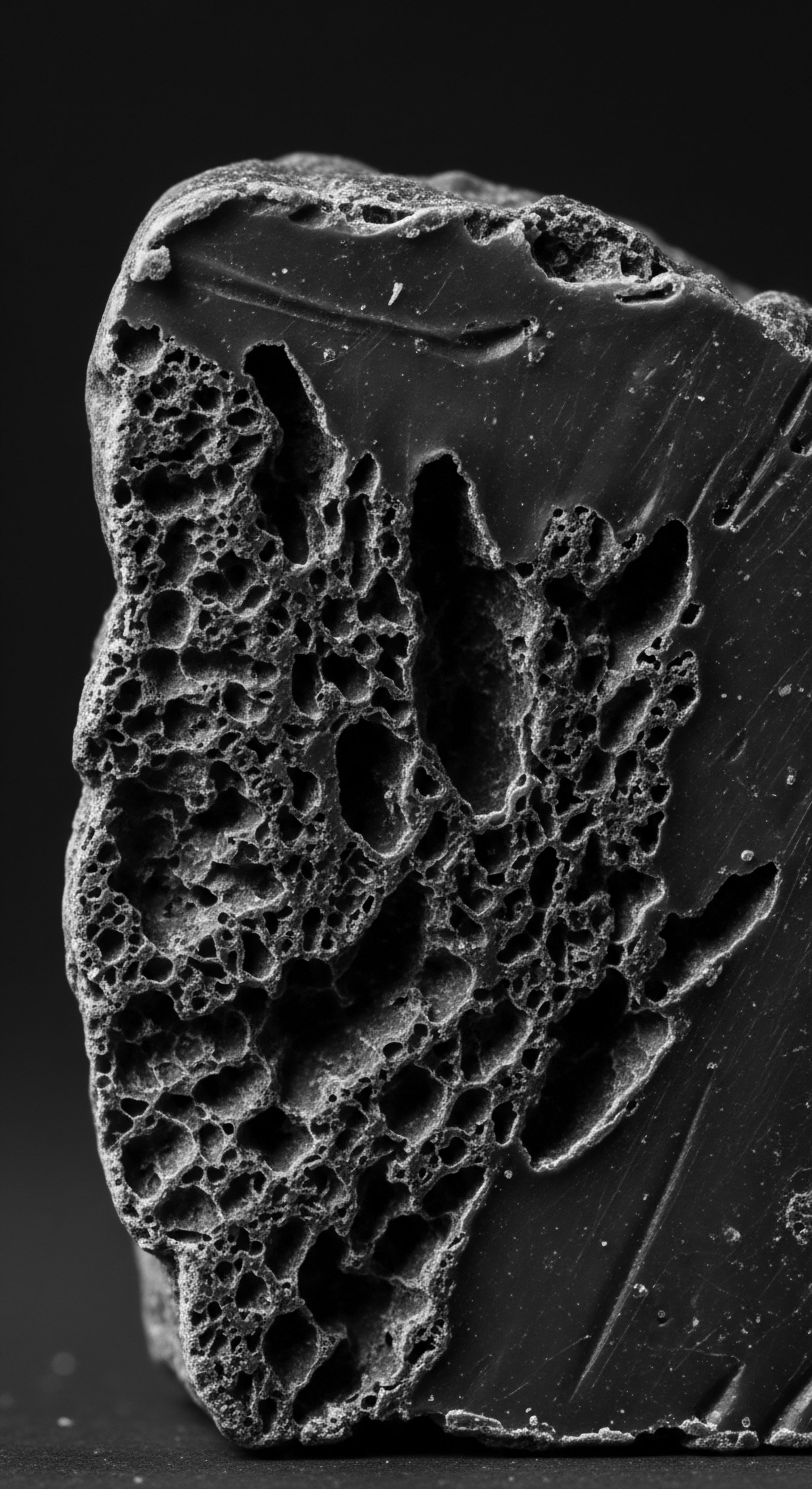
How Have Traditional Styling Methods Addressed Hair Porosity?
Traditional styling methods, particularly protective styles, implicitly accounted for hair porosity long before the term entered our lexicon. Consider the intricate world of braiding and twisting, practices deeply embedded in African cultures. These styles, whether Cornrows, Senegalese Twists, or Bantu Knots, serve a dual purpose ❉ they are aesthetically striking and also guard the hair against environmental stressors, helping to seal in moisture for high porosity strands and maintain the delicate balance for medium porosity hair.
When hair is tucked away, shielded from the drying effects of sun and wind, its ability to retain moisture improves. This practical outcome speaks directly to managing how quickly the hair loses its internal hydration.
For individuals whose hair possessed low porosity, requiring encouragement for moisture uptake, warm pre-treatments with oils like Palm Kernel Oil or Coconut Oil might have preceded styling. The gentle heat of the hands or even warm steam from bathing would have aided in slightly lifting the cuticles, allowing these nourishing substances to penetrate more effectively before the hair was secured in a style. These methods, while perhaps not consciously linked to “cuticle lifting,” were empirically discovered to render hair more pliable and receptive to care, leading to healthier, more resilient strands.
The artistry of textured hair styling, particularly protective forms, represents an ancestral wisdom that intuitively managed hair porosity for enduring health.

Tools of the Tending Hand
The tools employed in ancestral hair practices were often ingeniously crafted from available natural materials, each designed to respect the delicate nature of textured hair and its porosity. Combs and Picks fashioned from wood, bone, or even repurposed animal horn, possessed wide teeth to gently separate coils without causing breakage. This consideration for gentle handling is especially important for high porosity hair, which is more prone to damage when wet, as its open cuticles render it vulnerable. The use of hand-made combs facilitated the even distribution of natural oils and butters, ensuring that protective layers reached all parts of the hair shaft.
Beyond physical tools, certain plants themselves served as instruments of transformation. For example, the gelatinous inner leaf of the Aloe Vera plant, widely utilized across various cultures, provided a soothing, hydrating slip that aided in detangling, a crucial step for managing dense coils. Its moisture-rich quality would have been particularly beneficial for parched, high porosity hair, helping to smooth the cuticle and ease manipulation. These ancestral implements, far from crude, stand as a testament to deep observational knowledge and a dedication to hair wellness that transcended mere appearance.
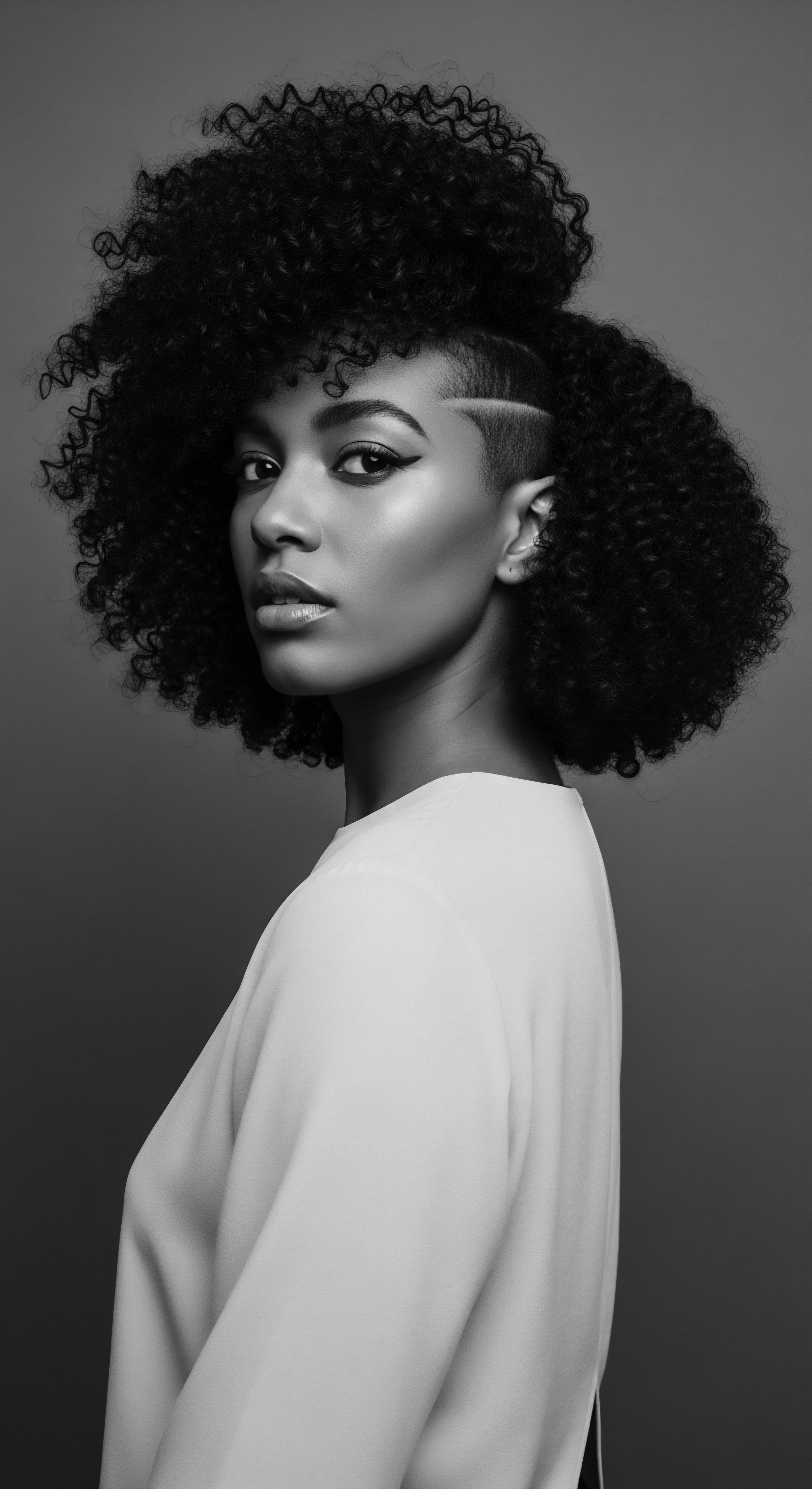
Honoring Historical Hair Adornments
Hair adornment, too, holds a place within this heritage of care, indirectly influencing how hair porosity was managed. Head coverings, such as elaborate scarves and wraps, served not only as expressions of status or spiritual devotion but also as practical shields against the elements. In many hot climates, wrapping the hair helped to prevent rapid moisture evaporation, especially for high porosity hair susceptible to quick drying. These coverings kept hair contained, reducing friction and environmental exposure, thereby allowing applied emollients to linger longer.
Beyond their protective role, the very act of adorning hair with beads, cowrie shells, or precious metals often involved practices that manipulated the hair into dense, compact forms. This compaction, as seen in the intricate braiding styles of various African societies, further assisted in sealing the cuticle layers, an intuitive response to managing moisture loss for certain hair types. For instance, in Ancient Egypt, wigs and extensions were meticulously cared for using emollients and oils derived from vegetables or animal fats, suggesting an awareness of conditioning for hair structures, whether natural or adorned. These practices, from the simplest cloth wrap to the most elaborate adornment, collectively underscore a long-standing understanding of hair’s moisture needs within the historical context of textured hair care.
- Shea Butter ❉ A foundational emollient in West African care, known for its ability to seal moisture onto hair.
- African Black Soap ❉ A traditional West African cleanser, gentle and non-stripping, preserving hair’s natural oils.
- Palm Kernel Oil ❉ Widely used in Nigerian hair treatments for its hydrating and softening properties.
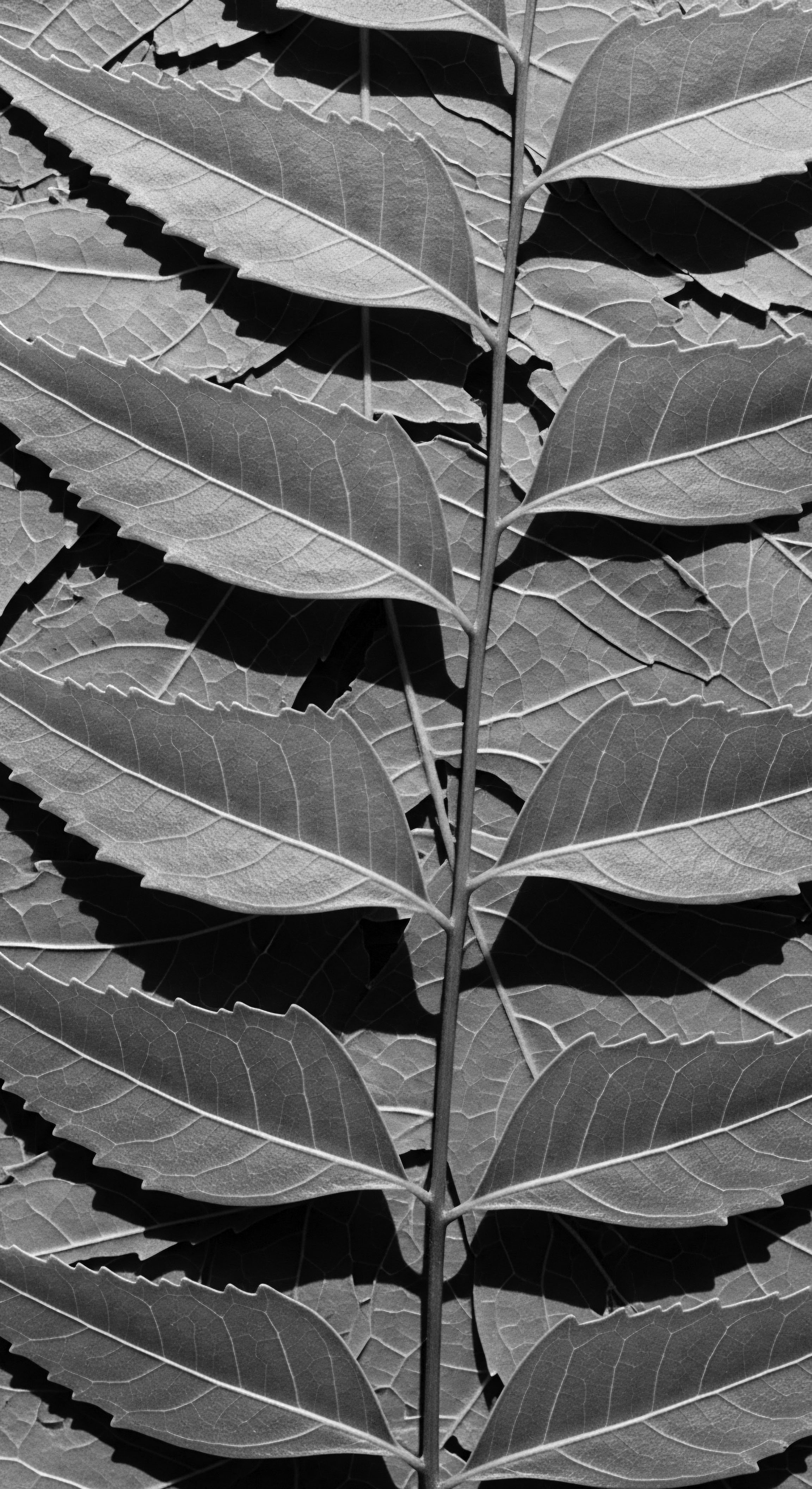
Relay
The continuity of care for textured hair, a relay of wisdom spanning generations, provides a lens through which to comprehend the enduring scientific principles of hair porosity and its profound cultural significance. This transmission of knowledge, often through oral tradition and lived example, represents a sophisticated system of hair wellness, deeply rooted in ancestral philosophies that viewed hair as a spiritual antenna, a social marker, and a repository of personal and communal story. The nuanced understanding of hair’s ability to retain hydration, though not articulated in modern scientific terms, was central to these practices.
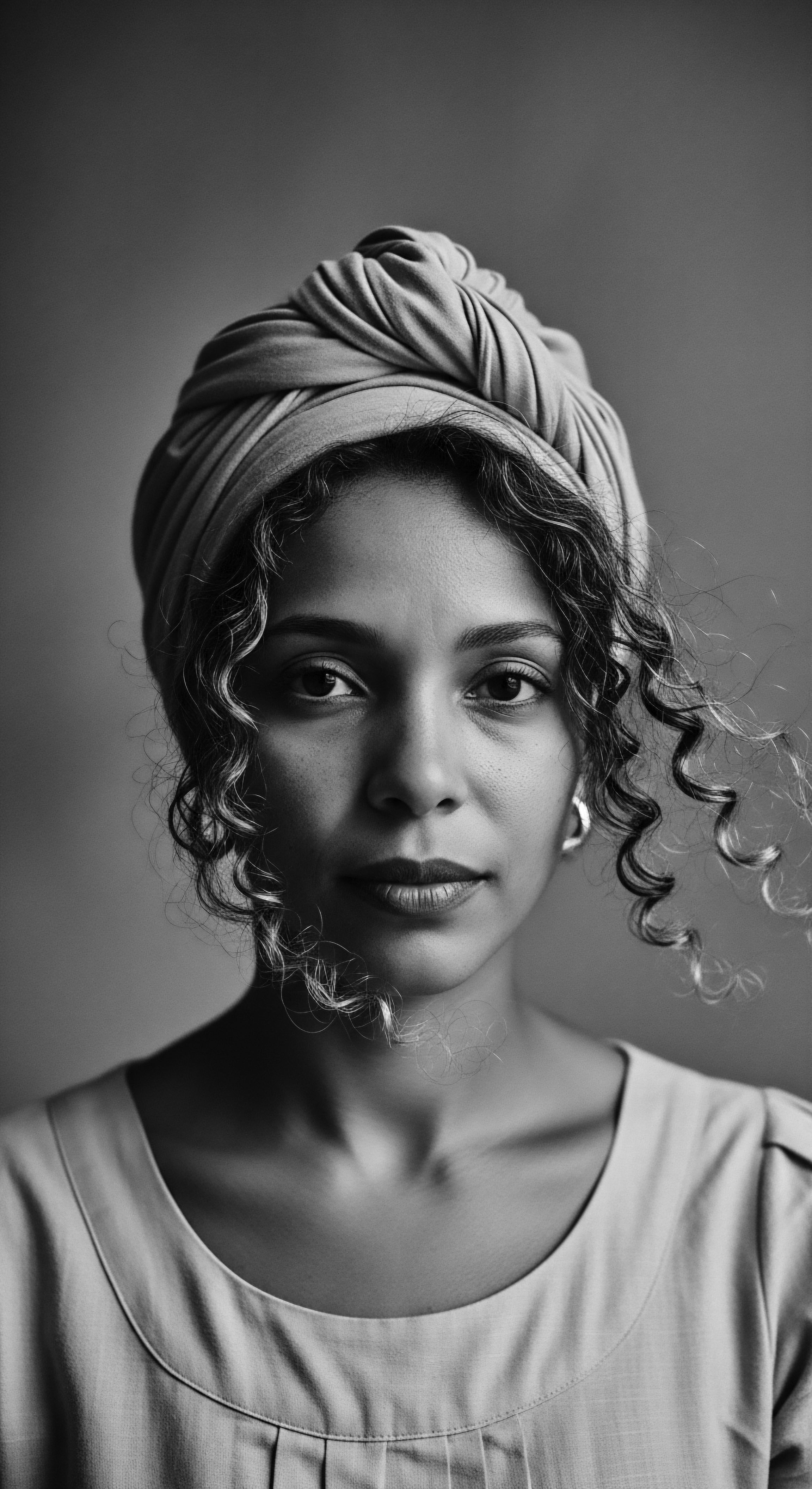
How Does Modern Hair Science Affirm Ancestral Knowledge of Hair Porosity?
Modern scientific understanding of hair porosity, with its precise definitions of cuticle behavior, does not supplant ancestral knowledge but rather offers a contemporary validation of centuries-old observations. When African communities historically applied rich butters or specific plant extracts to hair, they were, in effect, performing a molecular intervention. For high porosity hair, with its raised cuticles, the heavier oils like Castor Oil or dense butters acted as occlusives, laying a protective film over the shaft.
This barrier mechanism slowed the evaporation of water, preventing the rapid desiccation common to strands that readily absorb and release moisture. Conversely, for low porosity hair, the careful selection of lighter oils or the practice of warming treatments aimed to gently encourage the tight cuticles to soften and permit hydration to enter the strand.
The Liquid, Oil, Cream (LOC) and Liquid, Cream, Oil (LCO) methods, widely embraced in modern textured hair care, stand as direct descendants of these historical practices. These layering techniques, designed to first hydrate the hair, then seal that water in, mirror the sequential applications found in traditional regimens across the diaspora. For instance, historical records confirm the use of natural butters, herbs, and powders to assist with moisture retention in African hair care prior to enslavement.
The choice between LOC and LCO often depends on hair porosity ❉ those with higher porosity frequently benefit from the heavier seal of an oil or butter as the final step (LOC), while lower porosity hair might prefer a cream as the sealant (LCO). This modern systematization simply codifies the intuitive wisdom of layering that protected and nourished textured hair for ages.
The legacy of ancestral hair rituals provides the very foundation for contemporary insights into managing hair porosity.
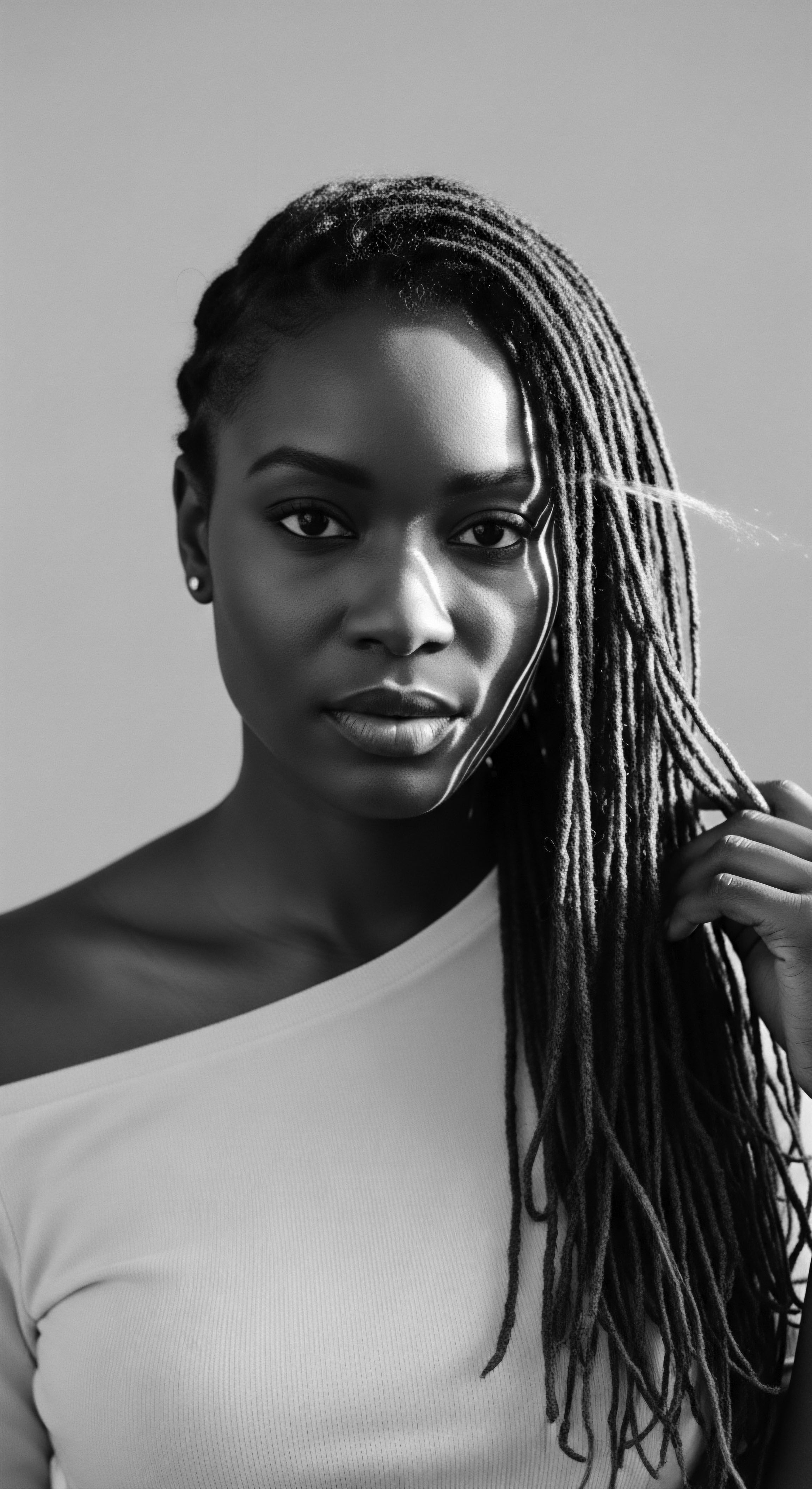
The Nighttime Sanctuary and Bonnet Wisdom
The ritual of nightly hair protection, often through the use of bonnets or head wraps, represents a direct, ongoing answer to the challenges posed by hair porosity, particularly for textured strands. This practice, far from a modern invention, is steeped in a heritage of care. During the mass enslavement of African populations, scarves and head coverings were used not only for cultural expression but as vital tools for protection and moisture retention. This historical use underscores an understanding that covering the hair prevented friction against rough sleeping surfaces, which could damage the fragile cuticle of high porosity hair and strip moisture from all hair types.
Today’s Satin or Silk Bonnets and scarves are contemporary iterations of these protective coverings. They guard against the mechanical abrasion of cotton pillowcases, which can create frizz and breakage, especially for those with high porosity, already vulnerable cuticles. They also aid in retaining the moisture introduced during a daytime regimen, ensuring that hydration is not lost to the air or absorbed by bedding while one sleeps.
This enduring practice, linking ancestral ingenuity with modern materials, speaks to a continuous thread of protective care, a living testament to the proactive measures taken to preserve the health and integrity of textured hair across centuries. The wisdom passed down recognized that what happened overnight profoundly affected the hair’s state the next day, a practical insight into moisture management.
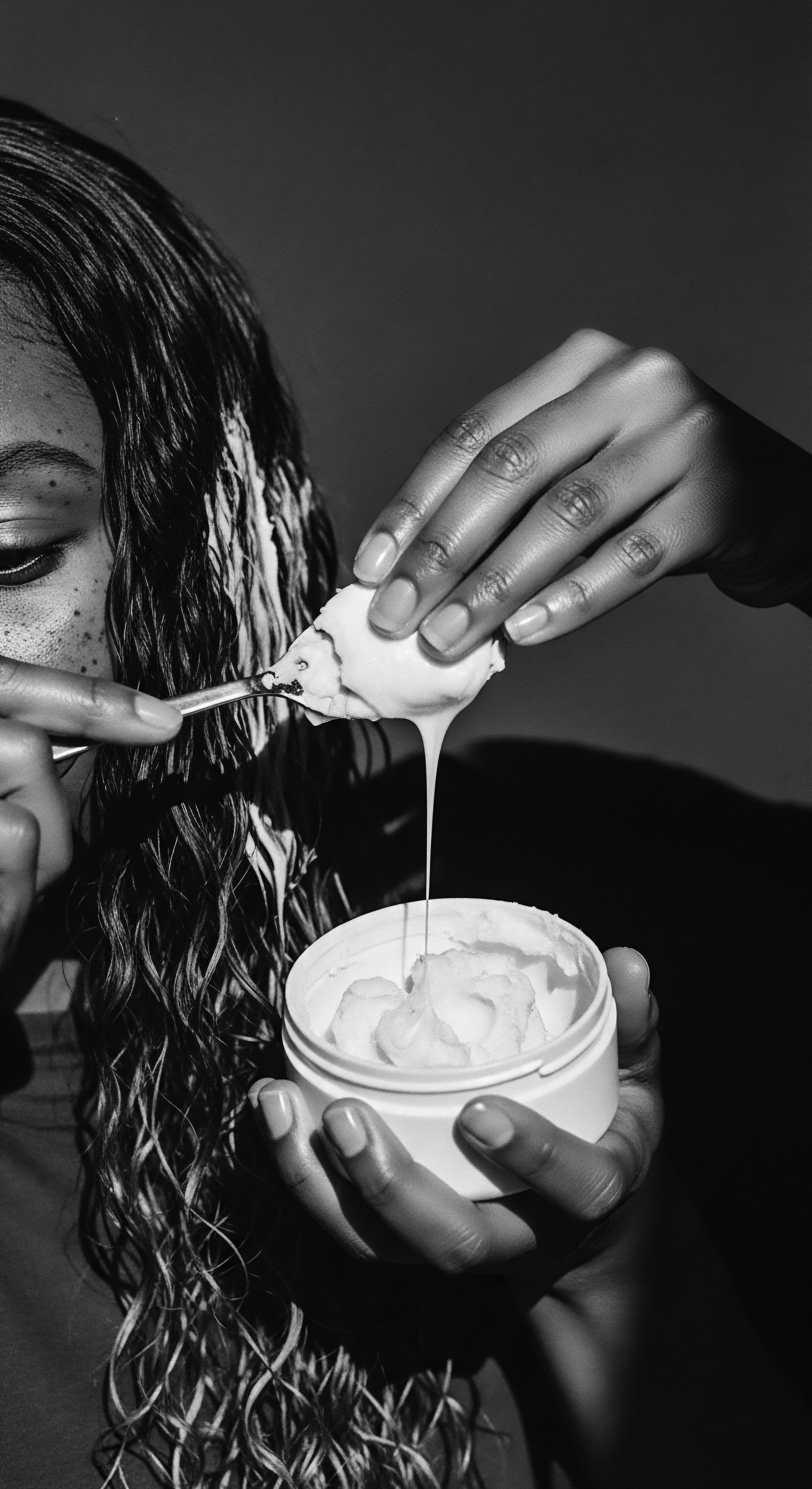
Ingredient Legacies and Porosity’s Demands
The deliberate selection of ingredients for textured hair care, passed down through heritage, aligns remarkably with contemporary scientific understanding of porosity. Take, for instance, the use of various oils:
- Marula Oil and Argan Oil, known for their lightness, are readily absorbed by hair and often favored for their ability to condition without weighing down strands. These might be particularly beneficial for low porosity hair, where heavier oils could sit on the surface.
- Shea Butter and Cocoa Butter, denser and richer, have a greater occlusive effect, making them ideal for high porosity hair that requires a stronger seal to prevent rapid moisture loss.
- Rooibos Tea, originating from South Africa, has antimicrobial and antioxidant properties, and its use in rinses could help maintain a balanced scalp environment, conducive to overall hair health regardless of porosity.
In a study surveying traditional plant-based beauty practices in Epe communities of Lagos State, Nigeria, Shea Butter was consistently applied to hair for “healthy and long hair,” and Palm Kernel Oil was used in hair treatments for its “nourishing and emollient properties.” These natural resources were employed not by chance but by generations who understood their hair’s responsiveness. The recognition that afro-textured hair has difficulty retaining water due to its angled follicle and tight coil, losing moisture quickly after washing, underscores the age-old and continued necessity for specialized moisture management.
When addressing issues like dryness, frizz, or breakage, particularly common challenges for textured strands, an understanding of porosity provides a crucial framework. For hair with high porosity, the goal is stabilization ❉ protein treatments can help temporarily fill gaps in the cuticle, and heavier products can seal the surface. For low porosity hair, the focus shifts to penetration ❉ lighter products, the application of gentle heat, and consistent, smaller doses of moisture are often effective.
This tailored approach, now scientifically articulated, parallels the empirical methods of ancestral care, where keen observation guided the remedies applied. The deep conditioning treatments performed weekly or biweekly, or hot oil treatments twice a month, recommended for moisture retention, directly reflect an active response to porosity’s challenges, a continuity of method from past to present.
| Ingredient (Origin) Chébé Powder (Chad) |
| Traditional Use Aids length retention by sealing the cuticle. |
| Porosity Implication (Modern View) Supports high porosity hair by providing a protective, moisture-locking layer. |
| Ingredient (Origin) Shea Butter (West Africa) |
| Traditional Use Moisturizer for skin and hair, base for hair pomades. |
| Porosity Implication (Modern View) Benefits high porosity hair, providing a strong seal to retain hydration. |
| Ingredient (Origin) Palm Kernel Oil (Nigeria) |
| Traditional Use Hair treatments, nourishing and emollient. |
| Porosity Implication (Modern View) Offers hydration and light conditioning suitable for medium to low porosity hair, promoting flexibility. |
| Ingredient (Origin) Rhassoul Clay (Morocco) |
| Traditional Use Gentle hair and scalp cleanser, non-stripping. |
| Porosity Implication (Modern View) Cleanses without over-drying, beneficial for all porosities, especially high porosity sensitive to harsh cleansers. |
| Ingredient (Origin) Aloe Vera (Various) |
| Traditional Use Soothing, hydrating, detangling aid. |
| Porosity Implication (Modern View) Excellent for high porosity hair, providing rapid hydration and cuticle smoothing. |
| Ingredient (Origin) The astute selection of natural ingredients by ancestral communities reveals an inherent understanding of hair's moisture dynamics. |
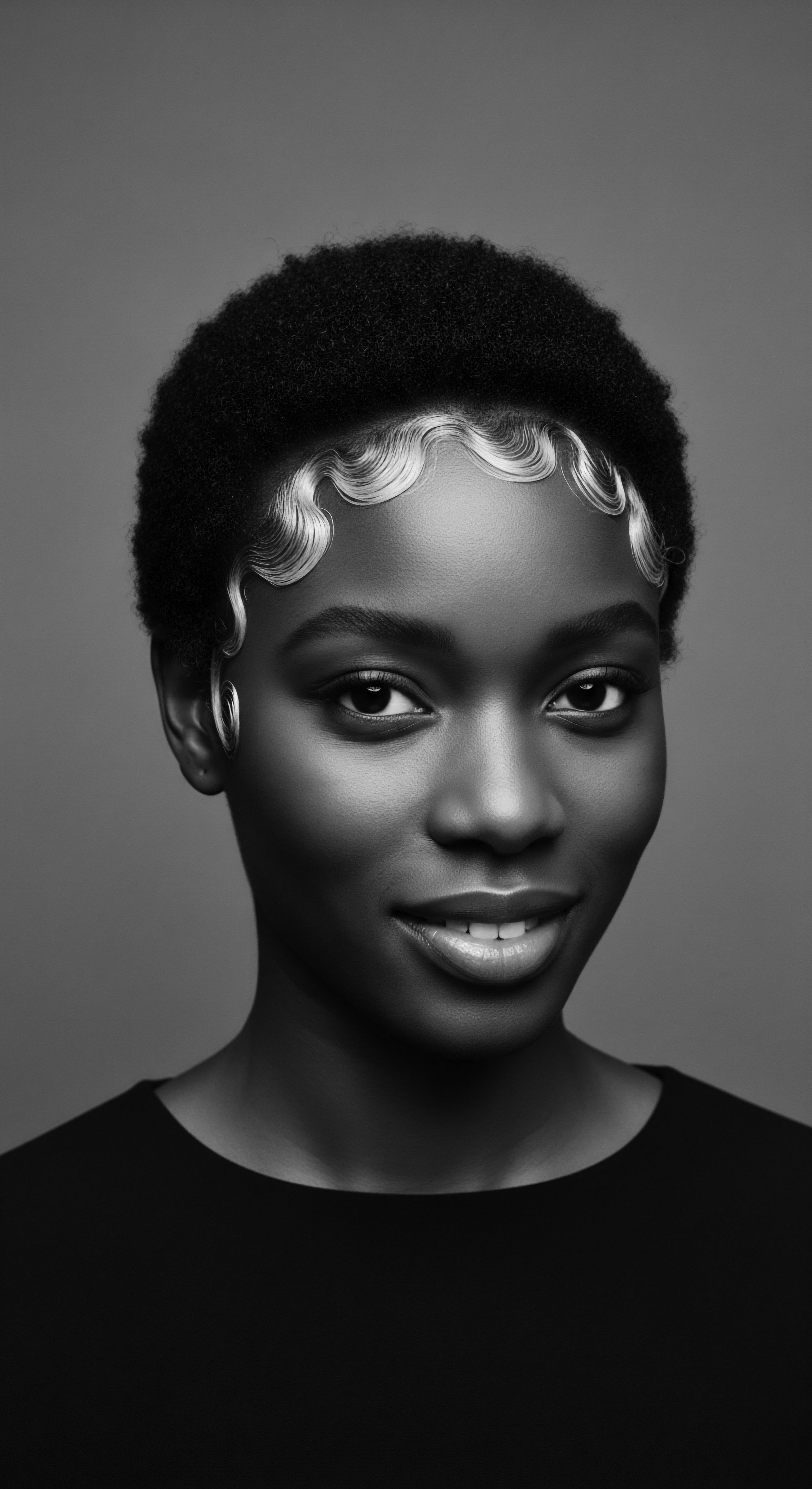
Reflection
The very notion of hair porosity, though cast in scientific terms today, finds its deepest resonance within the enduring legacy of textured hair care traditions. It points to a constant, knowing conversation between the individual, their hair, and the abundant gifts of their ancestral lands. From the Chadian women whose hands mixed Chébé with water to guard against moisture loss, to the pervasive practice of using protective styling and head coverings across the diaspora, a profound wisdom has always existed. This wisdom recognized that our strands, with their unique coiled architecture, behaved in particular ways when touched by water and oils, and that diligent, responsive care was a key to their health and beauty.
The heritage of textured hair is not a static artifact of the past. It is a living, breathing archive, continually unfolding in every careful wash day, every intentional styling choice, every knowing application of a traditional ingredient. It calls upon us to recognize the deep scientific literacy embedded within seemingly simple rituals, to honor the hands that passed down these techniques, and to carry forward a legacy of mindful connection to our hair. Our textured strands are indeed unbound helices, capable of expressing identity, resilience, and history, their journey from elemental biology to cultural statement guided by an abiding understanding of their inherent thirst, or their gentle resistance, to the waters of life.
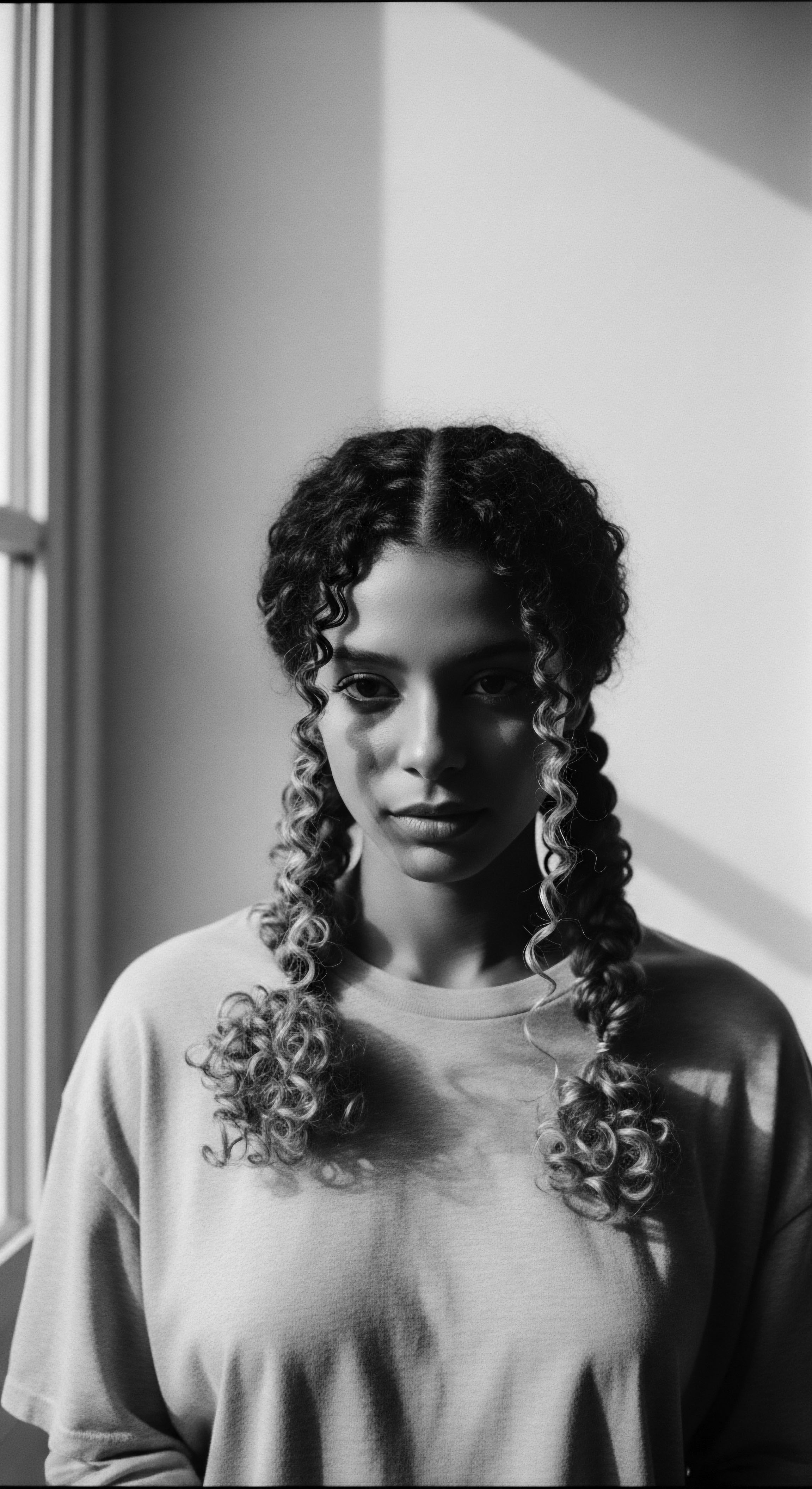
References
- Obscure Histories. (2024, February 13). Ancient Gems ❉ A Historical Survey of African Beauty Techniques.
- EBSCO Research Starters. (n.d.). Afro-textured hair.
- University of Salford Students’ Union. (2024, October 29). The Remarkable History Behind Black Hairstyles.
- Africa Imports. (n.d.). Traditional African Secrets For Long And Healthy Hair.
- Sellox Blog. (2021, June 4). Ancient African Hair Growth Secrets For Healthy Hair.
- MDEdge. (2025, March 4). Historical Perspectives on Hair Care and Common Styling Practices in Black Women.
- My Sasun. (2023, May 19). Exploring the Rich World of Nigerian Hair and Beauty Products.
- African Naturalistas. (2024, September 30). How to Determine Your Hair Porosity and Choose the Right Products.
- Egyptra Travel Services. (2025, February 1). From Ancient Egypt to Modern Beauty ❉ Timeless Cosmetic Secrets.
- Juniper Publishers. (2024, April 19). Cosmetic Ethnobotany Used by Tribal Women in Epe Communities of Lagos State, Nigeria.
- Formula Botanica. (n.d.). 10 Natural African Skincare Ingredients.
